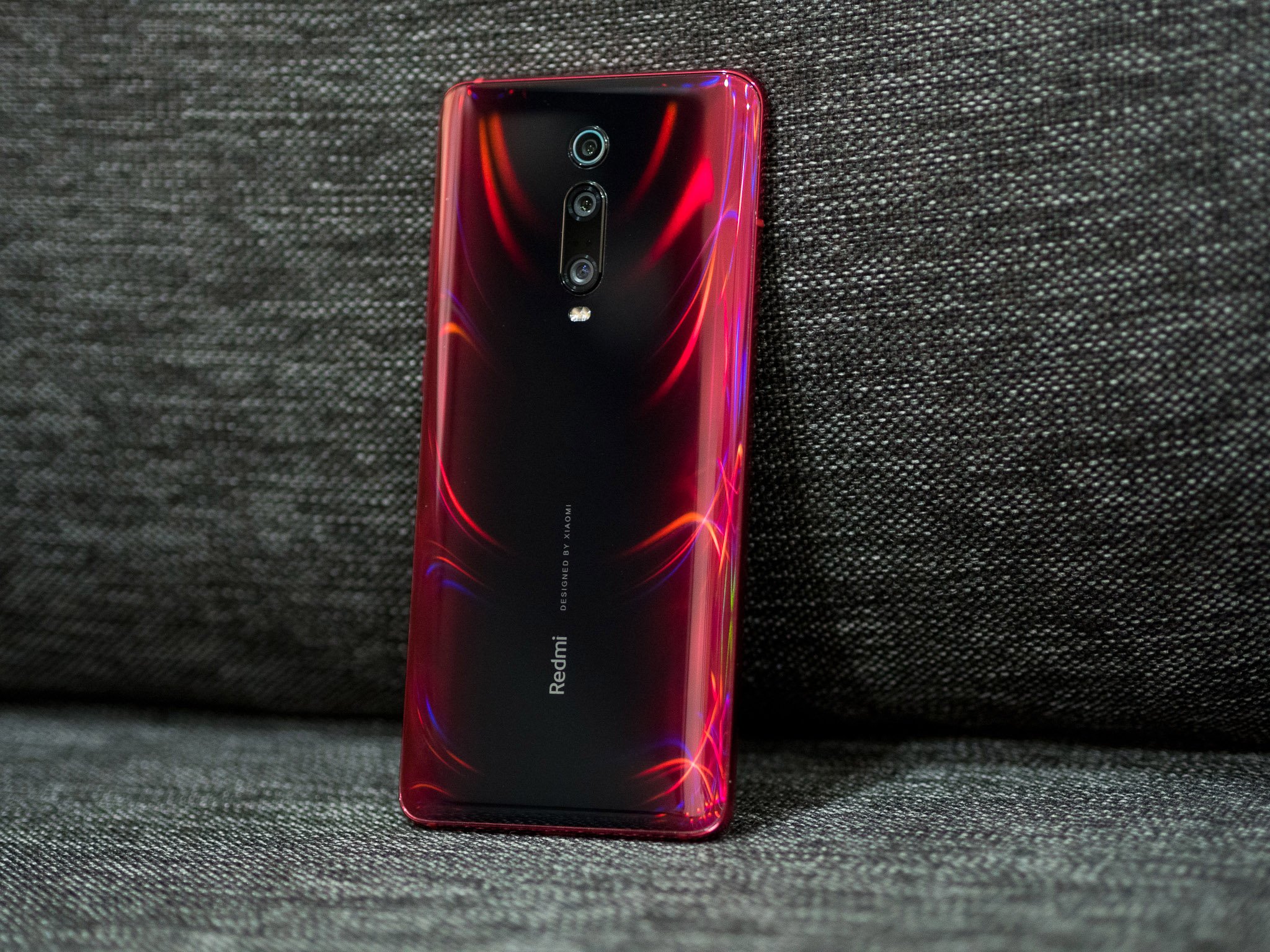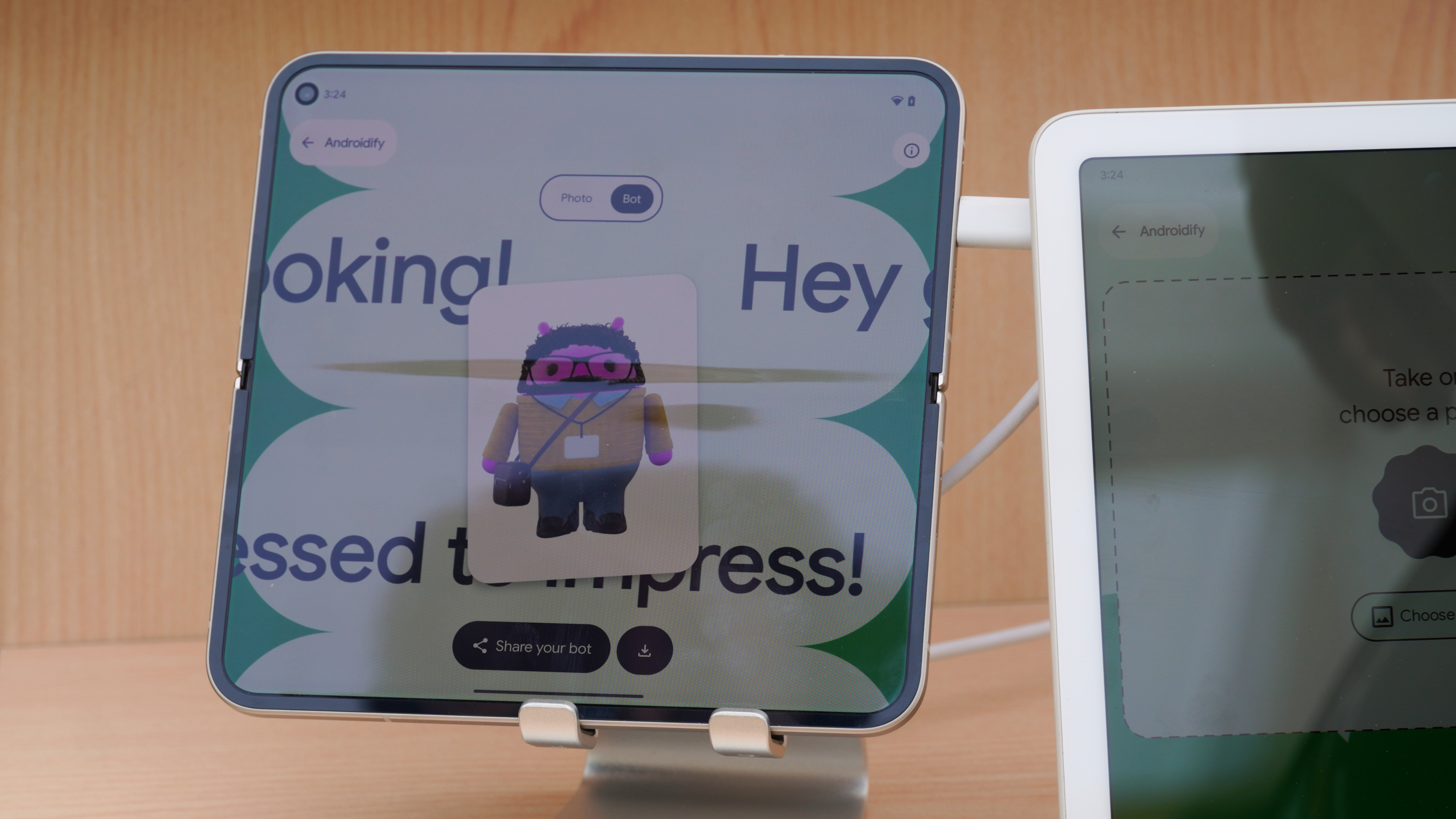Xiaomi knows how to build a great budget phone. The brand's entire business model rests on the budget segment, with the Redmi series accounting for a majority of its overall sales. Sure, Xiaomi also caters to the flagship space with the Mi series and the Mi Mix phones, but the Redmi lineup is the brand's bread and butter.
While Xiaomi has fared incredibly well in the budget space — it continues to be the brand to beat in the sub-$200 segment — it hasn't managed to break into the value flagship category. I'm talking about phones in the $400 to $500 space, as this particular category holds a lot of potential in the coming years.
Although the budget segment accounts for an overwhelming portion of sales in markets like India, there is a lot of momentum in the ₹30,000 ($430) to ₹40,000 ($570) space as those that have traditionally been using budget phones seek to make the switch to a more premium device. This is where manufacturers like OnePlus have benefitted the best: the company outsells Samsung when it comes to devices that cost over $400, and Xiaomi wants some of that action. The POCO series was introduced last year to specifically take on OnePlus, ASUS, Honor, and Samsung in the value flagship space, and it's safe to say that bet paid off.
That's why it's curious to see Xiaomi go back to the Redmi branding with this year's offering. The Redmi K20 Pro is what the POCO F2 should have been, because it's basically trying to achieve the same thing. It is the most affordable phone to feature Qualcomm's latest Snapdragon 855 chipset, and it shares a lot of attributes with the POCO F1. Heck, the device even has the POCO Launcher out of the box. Xiaomi must have felt that the Redmi branding holds more cachet in markets like China and India, even after the fact that the POCO F1 was the most talked-about phone in these parts last year.
Regardless of the branding change, the Redmi K20 Pro is the true successor to the POCO F1. The phone is starting off at just ₹27,999, making it the deal of the year — just as the POCO F1 was last year. This is the value flagship you've been waiting for.
The Good
- Incredible value
- Snapdragon 855 chipset
- Stunning design with notchless display
- Outstanding battery life
- Has a 3.5mm jack
- MIUI 10 comes with POCO Launcher
The Bad
Get the latest news from Android Central, your trusted companion in the world of Android
- Face unlock takes too long
- Notifications are still an issue
About this review
I am writing this review after using the Redmi K20 Pro for over two weeks in Hyderabad and Taiwan. I used the phone on Airtel's 4G network in Hyderabad for three days, and switched to FarEasTone in Taiwan for the remainder of the review. The phone was on MIUI stable build 10.3.1.0 throughout the testing period, and did not receive any updates.
Redmi K20 Pro Hardware
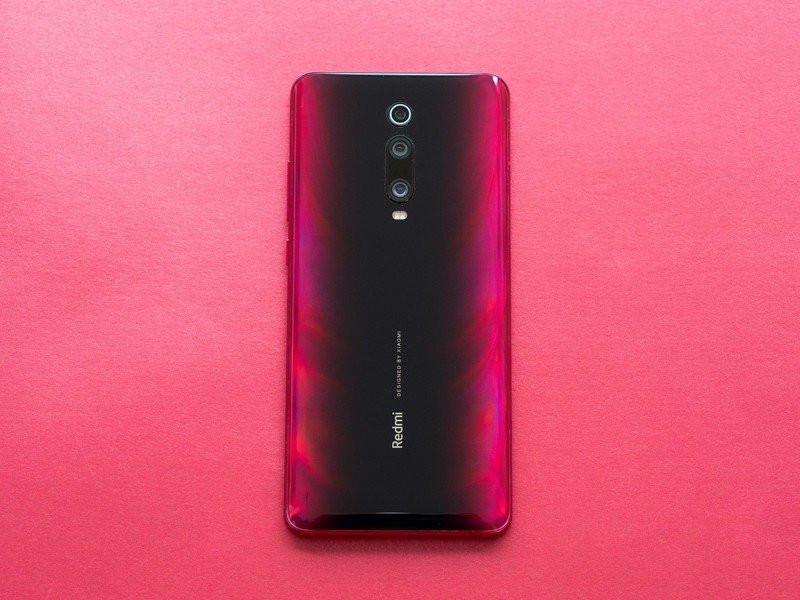
As good as the POCO F1 was last year, it had a decidedly plain design with a polycarbonate back and minimal flair. Xiaomi has thankfully addressed that with the Redmi K20 Pro, which has a glass back with one of the most evocative gradient patterns you'll come across on any phone today. The phone comes in a red or blue color option, and both models look stunning.
The red variant looks aggressive with bold colors on the either edge and all over the sides, and that provides a great contrast to the middle portion, which has just the Redmi branding. The design itself is an evolution of what we've seen earlier in the year on the Redmi Y3. The gradient effect that kicks in under the right lighting condition is absolutely mesmerizing and makes the device stand out. I still prefer the more subdued Breathing Crystal P30 Pro, but the Redmi K20 Pro is a close second in terms of design. Xiaomi really has turned things around.
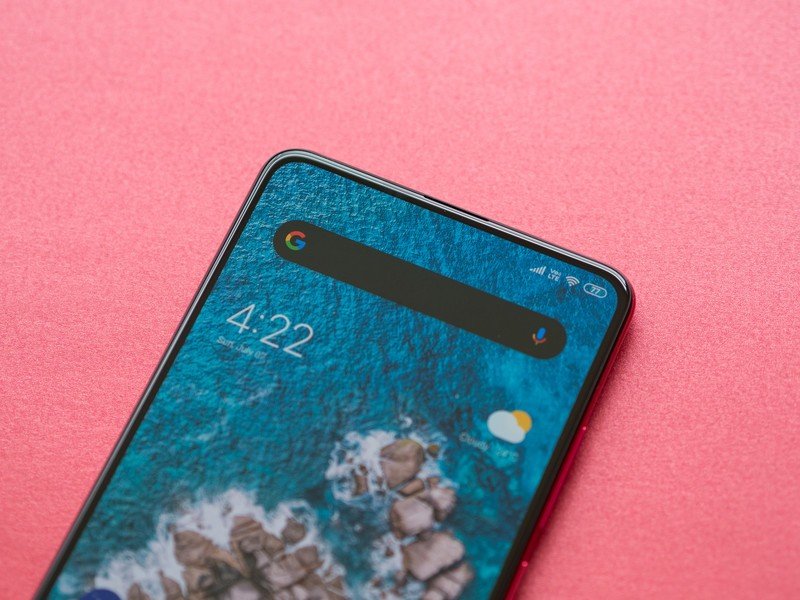

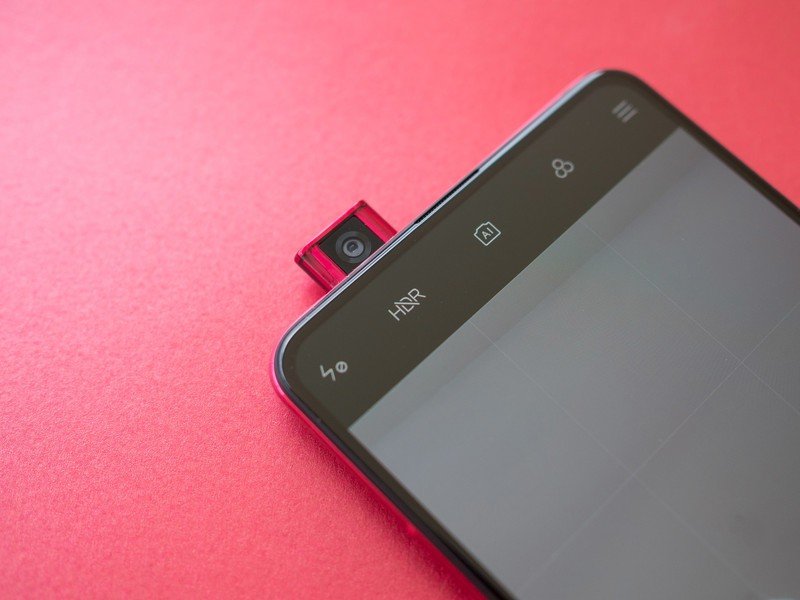
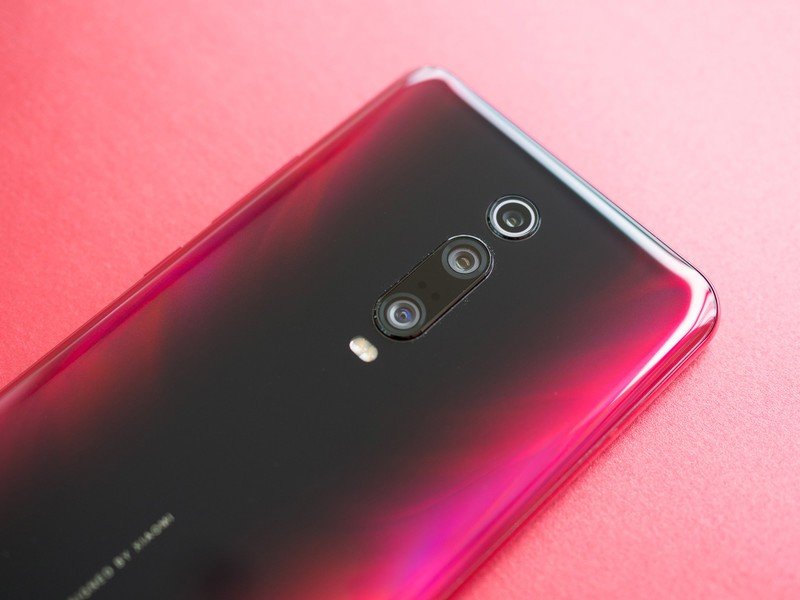
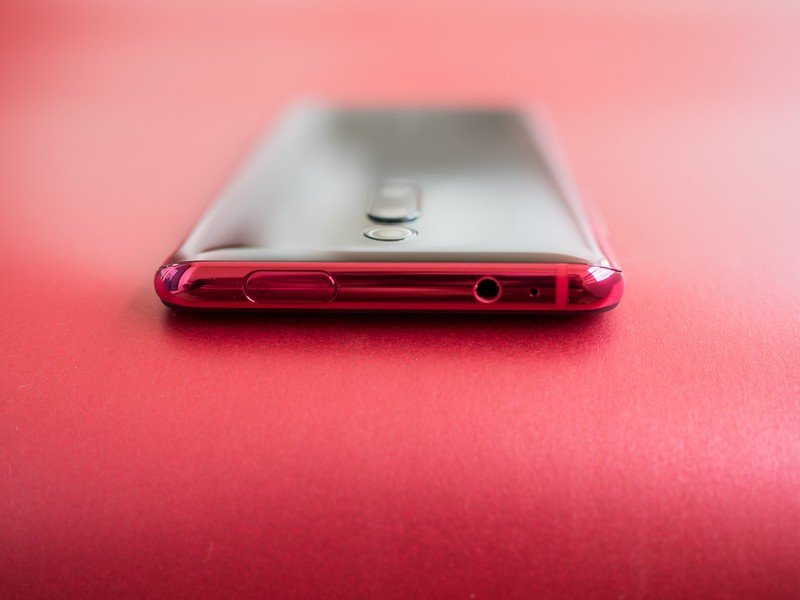
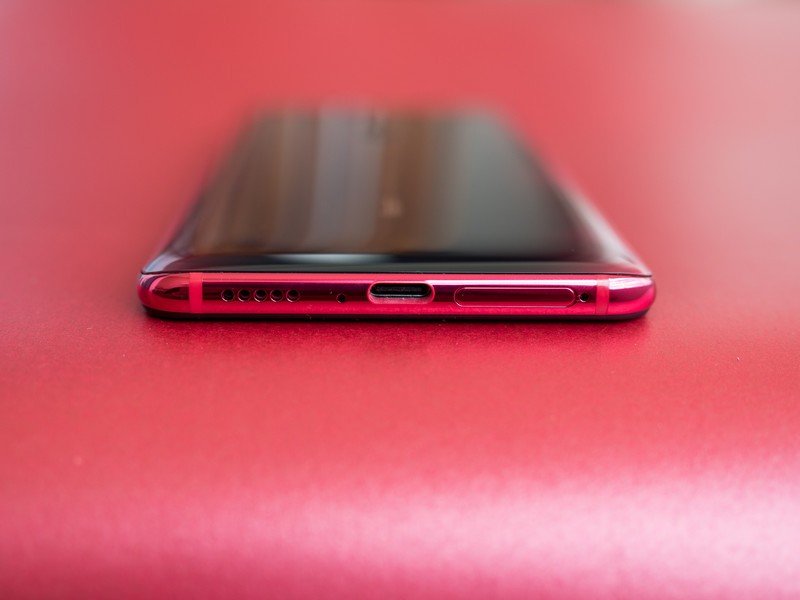
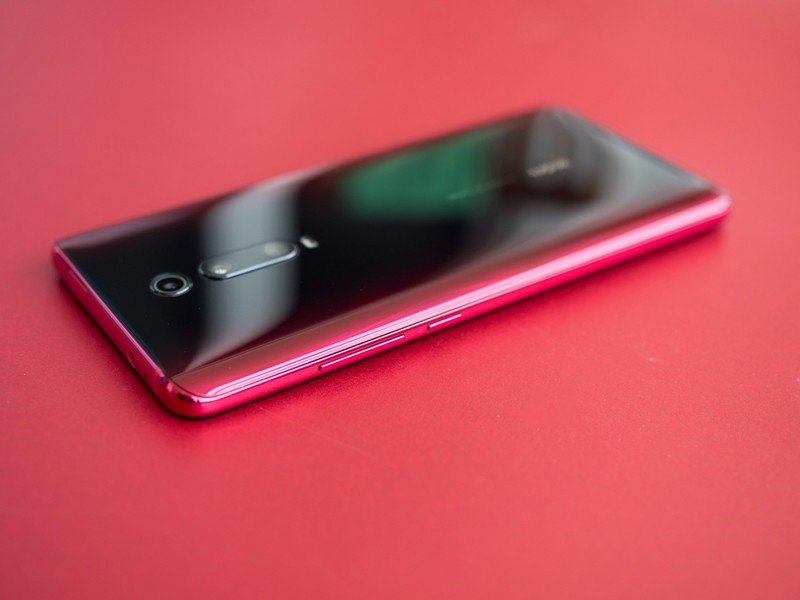
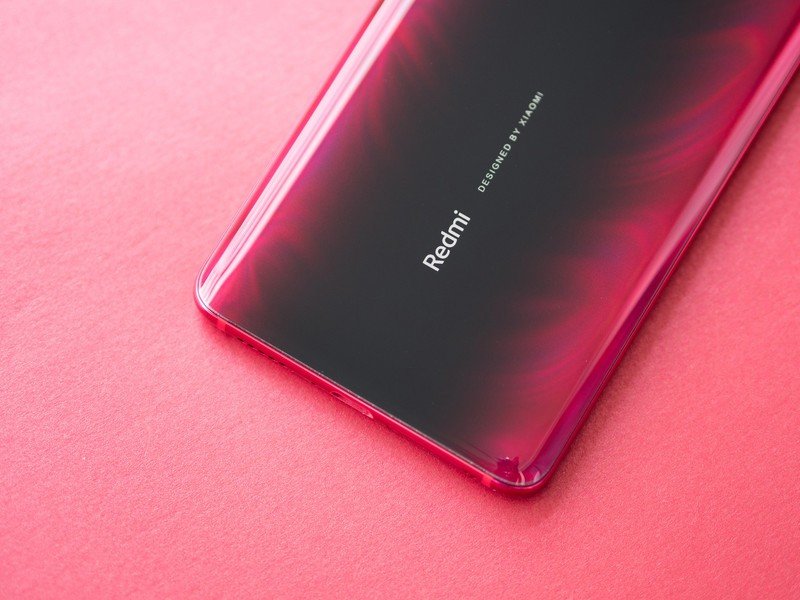
There are considerable improvements elsewhere: the front doesn't have any cutout as the front camera module is hidden away behind a motorized slider. The slider has a LED light that activates whenever it launches, giving it a sense of occasion. The LED light doesn't do much other than add a bit of flair to the camera module, as the screen lights up when you select the flash option for the front shooter.
In the right light, the Redmi K20 Pro looks absolutely stunning.
The lack of a cutout means you get an all-screen front, and the minimal bezels at the top and bottom create an immersive experience when playing games or viewing videos on the device. The phone has a 3.5mm jack located at the top, and it charges over USB-C. There's even a notification LED, but it's located on the retractable camera module, negating its usefulness. The power and volume buttons are located on the right, the speaker is next to the USB-C charging port, and there's a minor camera bump at the back. It's not so much that it makes the device wobble when using it on a flat surface, and that's a good thing. The main camera sensor itself has a multicolor accent around it, giving it some flair.
The display is a 6.39-inch Super AMOLED offering, and it is one of the best panels you'll find in the sub-$500 segment. It has vibrant colors and excellent contrast levels, and sunlight readability was great as well. The one issue I had was with auto brightness: there were instances where the brightness wouldn't adjust based on the lighting condition, and I had to use the slider to manually tweak the brightness.
Now, you don't need me to tell you that the Redmi K20 Pro is fantastic value. It is the most affordable device to be powered by the Snapdragon 855, and that isn't going to change in 2019. It's incredible what Xiaomi has managed to achieve on the hardware side of things when you consider just how many features the Redmi K20 Pro has to offer over the POCO F1: the design is much more premium, there's a retractable camera module, in-display fingerprint reader, a 48MP camera, and an AMOLED screen.
The Redmi K20 Pro changes the entire paradigm for value — I haven't used a phone that offers so much for so little.
The end result is that the Redmi K20 Pro can hold its own against the best that Android has to offer. And that's a huge deal when you factor in just how much the phone costs — we're talking less than half the price of the Galaxy S10, Pixel 3, and even the OnePlus 7 Pro. This is the best bargain you'll see in 2019.
Onto the hardware itself: I'm testing the 8GB/256GB variant of the Redmi K20 Pro, and it is just as fast as the Mi 9 or the OnePlus 7 Pro. The Snapdragon 855 powers through everyday tasks without breaking a sweat, and it also handles intensive gaming with aplomb. This is not a phone where you'll notice any slowdowns. Xiaomi is also rolling out a Game Turbo feature that prioritizes bandwidth and mutes incoming notifications when you're in a game. MIUI in general feels much more stable and better optimized when compared to last year. The device is also available in a 6GB/128GB option if you're looking to save some cash.
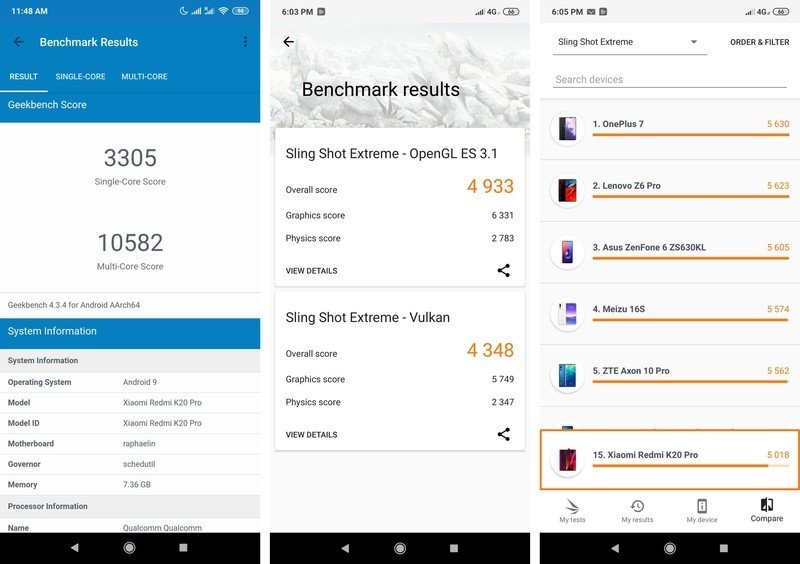
Xiaomi still puts a lot of faith in synthetic benchmarks, touting how the Redmi K20 Pro was the "fastest phone in the world" because of its AnTuTu score. Those numbers don't really mean much in day-to-day usage, but there is a part of the vocal Xiaomi community that cares about these figures. I ran the device through its paces on Geekbench, and it netted a single-core score of 3305 and multi-core score of 10582.
3DMark is a good indicator of graphics performance as the test simulates real-world gaming scenarios, and in Sling Shot Extreme, the K20 Pro hit a score of 4,933 on the OpenGL ES 3.1 test and 4,348 on Vulkan. These numbers aren't the highest I've seen on 3DMark — the OnePlus 7 Pro easily goes over 5,000 — but that doesn't mean the K20 Pro is any slower. If anything, using it alongside the OnePlus 7 Pro showed just how fluid it is at everyday tasks.
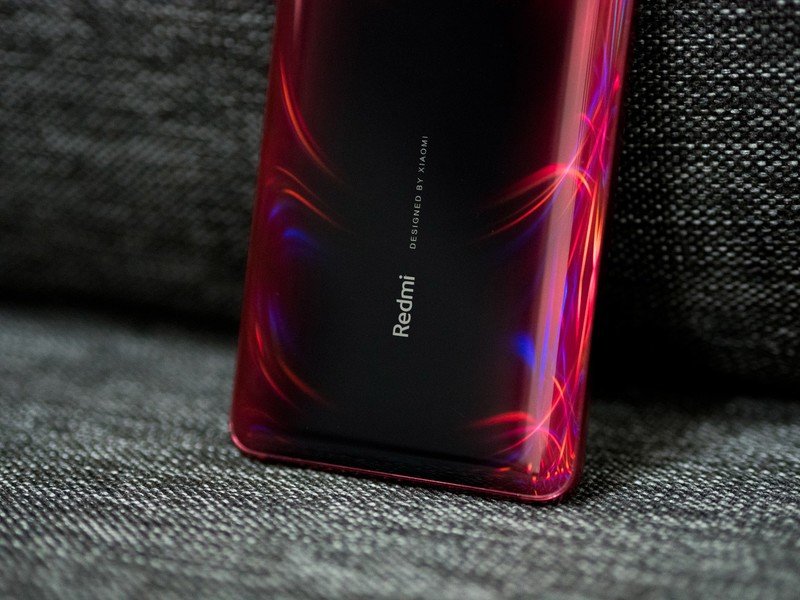
Moving onto the rest of the hardware, the in-display fingerprint sensor is reliable enough that I didn't notice any issues. It registered my fingerprint and authenticated in under a second, which is in line with other devices that sport the same module. Face unlock was a different matter, as you have to first wake the screen and swipe up for the camera module to engage. The entire process just takes too long, and isn't really worth the hassle. Xiaomi needs to add a way for the camera to pop up as soon as you press the power button, like you get on the OnePlus 7 Pro.
Xiaomi hasn't left anything out on the Redmi K20 Pro: you get a 3.5mm jack, Wi-Fi ac, Bluetooth 5.0, Aptx HD, and 27W wired charging. Best of all, you get an 18W charger in the box. On the subject of charging, the Redmi K20 Pro delivers outstanding battery life. That's not new for Xiaomi, but I put the 4,000 mAh battery through its paces in Taiwan and it always delivered.
There wasn't a single day when the battery went below 30%, and that was after using the device as a mobile hotspot, extensively using navigation, and taking over a hundred photos daily. The belief that you can push the phone as hard as it can go and still deliver at least a day's worth of battery life is vital when you're traveling, and in this regard, the Redmi K20 Pro is one of the best phones around. I was using the Pixel 3 XL alongside the Redmi K20 Pro solely for taking photos, and the Pixel didn't last an entire day in spite of the fact that it didn't have a SIM card.
Redmi K20 Pro Software

The conversation around MIUI in recent months has been all about ads. Xiaomi's decision to roll out ads in the UI was met with a lot of backlash, and justifiably so. The ads are pervasive throughout the interface, and there's just no way of limiting them. There are ways to disable ads entirely, but seeing as how Xiaomi is very selective about what regions it shows ads in, a better option would just be to select a different country at initial configuration.
That's what I ended up doing on the Redmi K20 Pro: I set the U.S. as the region, and I haven't seen a single ad on the device after two weeks of usage. Xiaomi needs to come up with a better way to manage ads, or at least have an alternative option available where users can pay to get rid of the ads in the interface. Because right now, ads are bogging down what is otherwise a pretty decent interface.
Ads continue to bog down MIUI, but there's an easy way to get rid of them.
MIUI has come a long way in the last two years, and it is at a point where it fianlly feels cohesive. There's still no app drawer — that's rumored to be debuting with MIUI 11 — but the Redmi K20 Pro comes with the POCO Launcher out of the box, so you don't have to install a third-party option. Oh, and the inclusion of the POCO Launcher furthers the belief that the Redmi K20 Pro is basically the POFO F2.
The only other issue with MIUI is notifications. For whatever reason, Xiaomi doesn't seem to be able to fix push notification issues in the ROM, and I had to manually enable autostart for most of the services I use regularly to receive push notifications. I also faced an issue with DND where the phone would continue to chime even after manually triggering Do Not Disturb.
Overall though, MIUI is one of the most feature-rich skins around, and the fact that the Redmi K20 Pro comes with the POCO Launcher makes it a little less annoying. Of course, you still get the same host of customization options that have made Xiaomi devices stand out over the years, including custom navigation gestures, themes, granular security settings, and so much more.
Redmi K20 Pro Camera
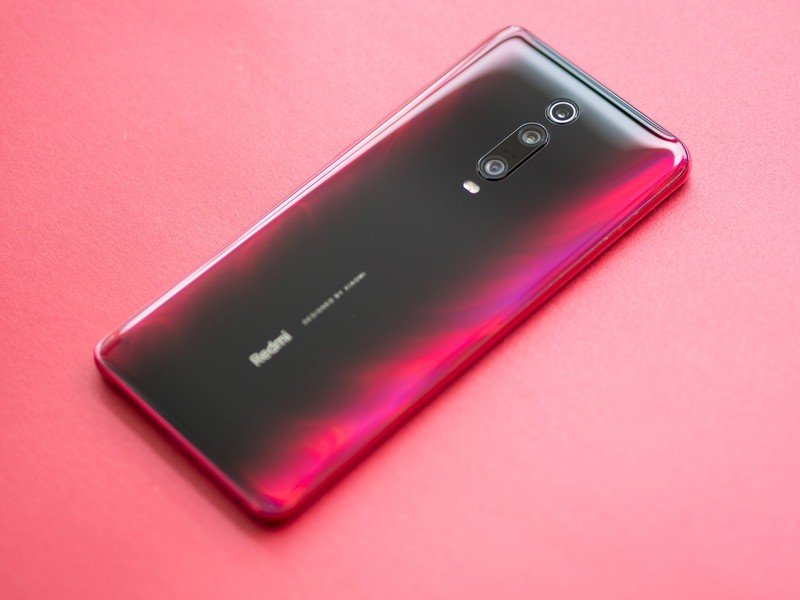
The Redmi K20 Pro is the first in the Redmi series to feature three cameras at the back. Like most value flagships we've seen this year, the phone has a 48MP primary camera backed by an 8MP telephoto lens and a 13MP wide-angle shooter. The sensor itself is a Sony IMX 586 — a mainstay in this category in 2019 — and like other manufacturers, Xiaomi is using pixel binning to output 12MP shots from the main sensor.
The camera interface itself is unchanged from earlier MIUI builds: you can easily switch between all the shooting modes with a swipe left or right gesture, and there's more than enough to choose from. You get a dedicated night mode as well as the ability to shoot at 48MP, toggles to switch between the three lenses, a host of beauty effects, and toggles for AI camera and HDR.
For what it costs, the camera on the Redmi K20 Pro is fabulous.
Coming to the image quality itself, the Redmi K20 Pro takes outstanding photos in daylight scenarios. Shots come out full of detail and with plenty of dynamic range, but the images are overly saturated — not unlike that from a Samsung phone. That said, they do look great on social media platforms. HDR brings out much more detail from a scene without altering the color balance, and the wide-angle lens held up very well in most shooting scenarios.
The same cannot be said of the 2x zoom lens. Images from the 8MP sensor came out muddy and full of noise, and it just wasn't up to the mark. My main annoyance with the camera, however, is just how long it takes to launch it. You can launch the camera by either double-pressing the power button — my preferred option — or the volume rocker, but it takes a few seconds for it to open. It's almost as if the phone is trying to figure out if it wants to launch the camera when it's locked.
Anyway, once the camera engages, it takes a second or two to lock into a subject. I had issues with autofocus and there were a few instances where shots came out blurry — you have to put in a little bit of effort to make the most out of this particular camera. That said, when things come together, the results are stunning.

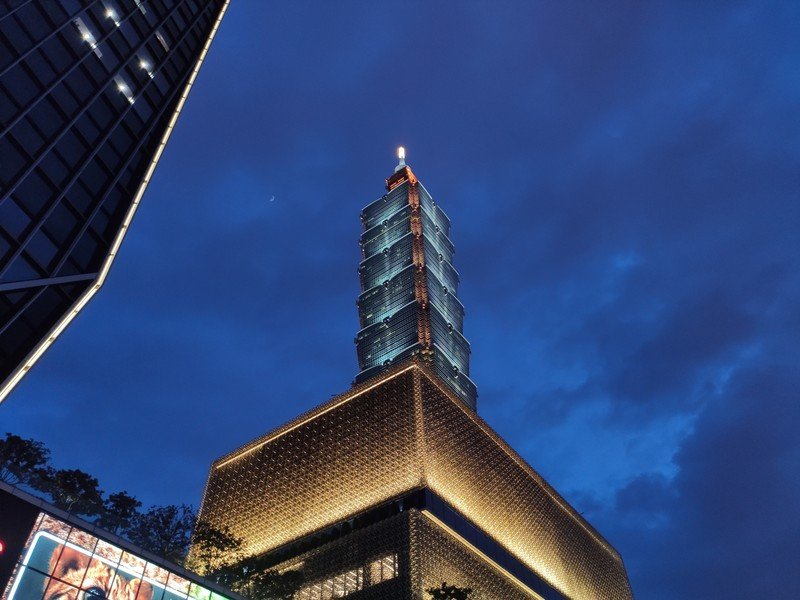





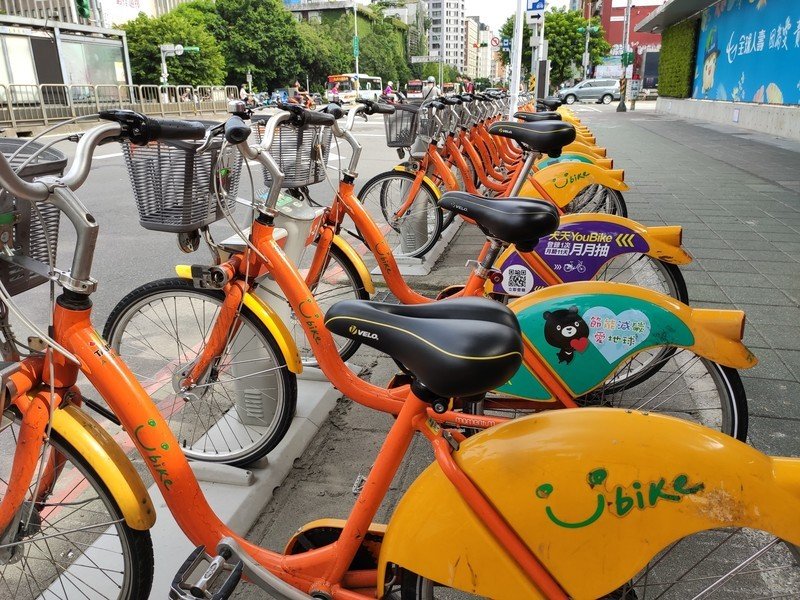
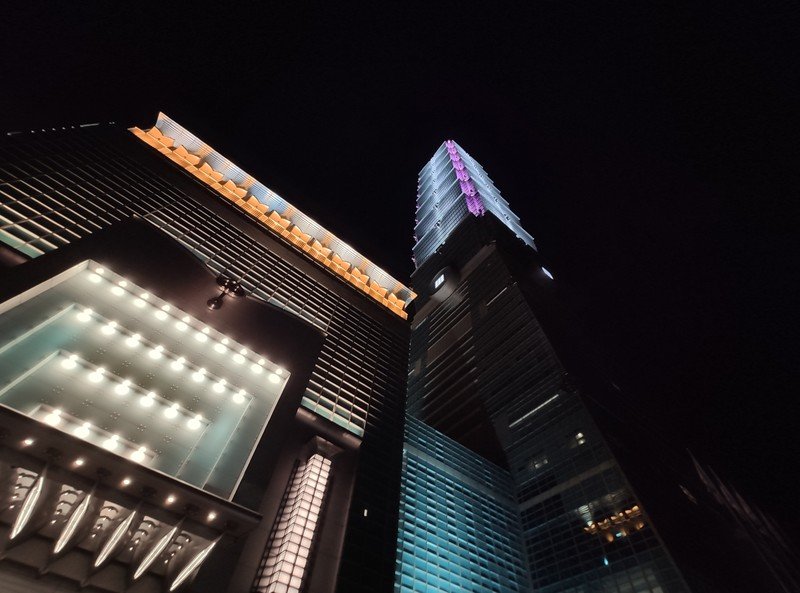









As you can make out from the photos above, the Redmi K20 Pro does an astonishingly good job in low-light conditions. It's obviously not at the same level as the Pixel 3 or the P30 Pro, but for what it costs, you're getting a camera that is incredible. The camera does a great job at limiting the noise in low-light shots, and colors aren't washed out either. This is the most fun I've had shooting with a camera on a $500 phone, and it's safe to say that the Redmi K20 Pro is ahead of its immediate rivals — the ASUS 6z and the OnePlus 7 — in this regard.
Redmi K20 Pro Bottom line
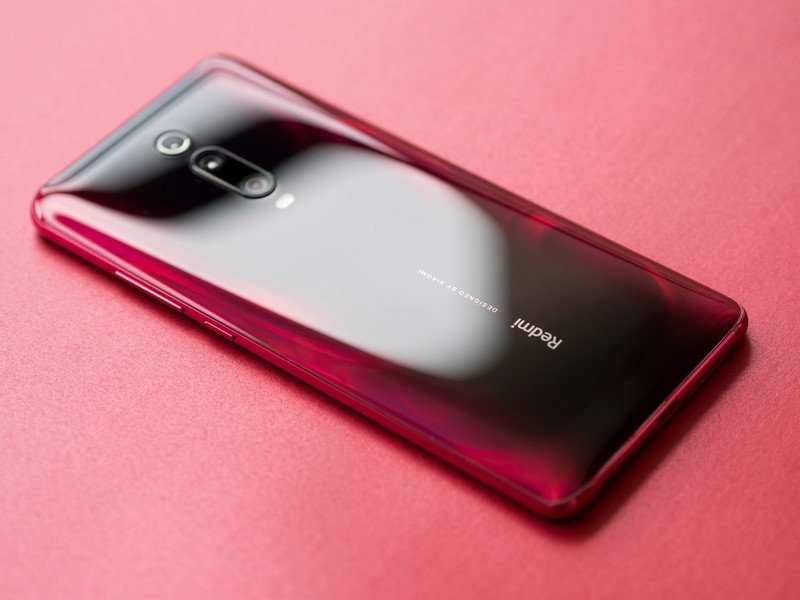
The Redmi K20 Pro isn't the only phone that's offering stellar value. The ASUS 6z is also a great option that retails at ₹31,999 ($460), and there's also the ₹32,999 ($475) OnePlus 7. But the Redmi K20 Pro is hitting shelves at just ₹27,999 ($400), allowing it to decimate the competition when it comes to value. The 8GB/256GB edition is available for ₹30,999.
Xiaomi has shown time and again that it is willing to go much more aggressive than its rivals, and that trait hasn't changed in 2019. The Redmi K20 Pro is the most feature-rich value flagship you'll find at this price point, and there really isn't anything missing from the device.
You get a brilliant Super AMOLED display, the latest hardware in the form of the Snapdragon 855, up to 8GB of RAM and 256GB of storage, a 48MP camera that takes amazing photos, a 3.5mm jack, and a 4,000 mAh battery that lasts two days. Combine that with the fact that there's no cutout at the front and a design that is sure to turn heads, and you have one of the best phones of 2019.
4.5 out of 5
With the Redmi K20 Pro, Xiaomi is once again showing that it understands this market better than anyone else. The phone offers more value and costs less than the cometition, and comes with a camera that is one of the best in this category. With the 6GB/128GB option starting off at just ₹27,999, there really isn't a device today that comes close to the Redmi K20 Pro. Xiaomi once again has the phone to beat in 2019.
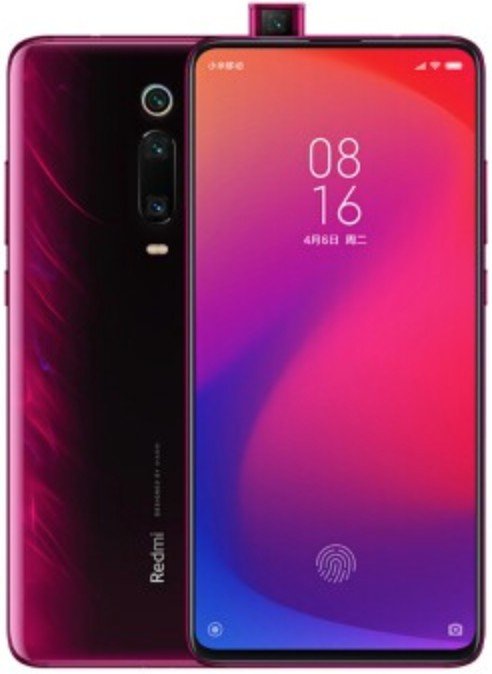
No other phone comes close.
Xiaomi has done it again: the Redmi K20 Pro delivers incredible value without compromising on the basics. You're getting a phone with a gorgeous design, notchless display, in-screen fingerprint sensor, and the latest Snapdragon 855 chipset. The battery lasts for two days, the camera is fabulous, and it all costs less than half of that of the Galaxy S10. The Redmi K20 Pro is the yardstick that all other flagships will be measured against in 2019.

Harish Jonnalagadda is Android Central's Senior Editor overseeing mobile coverage. In his current role, he leads the site's coverage of Chinese phone brands, networking products, and AV gear. He has been testing phones for over a decade, and has extensive experience in mobile hardware and the global semiconductor industry. Contact him on Twitter at @chunkynerd.
